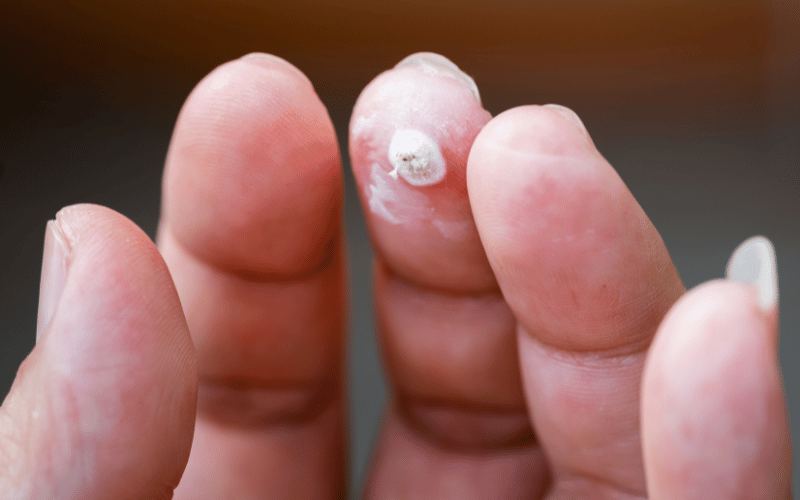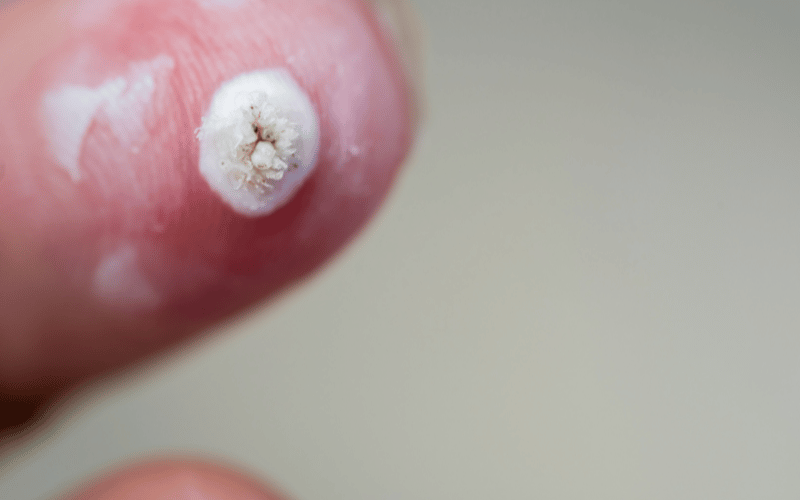Introduction: A Close Look at Filiform Warts
Warts, while common, come in various shapes and sizes, each with its unique set of characteristics. Among them, filiform warts, also known as digitate warts, stand out due to their distinct appearance and areas of growth. While warts, in general, might be seen as mere skin anomalies, it’s vital to understand their specifics, especially when it comes to filiform warts. Why? Because having a grasp on their nature, origin, and potential impact on one’s health can aid in their effective management and prevention.

Filiform warts, unlike other wart types, have a long, narrow, and finger-like appearance, which lends them the name ‘digitate’. But the story doesn’t end with their appearance. Their genesis, predominantly from a strain of the Human Papillomavirus (HPV), highlights the infectious nature of these skin protrusions. Found commonly on the face, particularly around the eyes and lips, these warts can be a cause for both cosmetic and health concerns.
But wait, before you jump to any conclusions or let myths cloud your judgment, it’s essential to dive deep and extract the truth. This article aims to do just that – offer a thorough, fact-based exploration of filiform warts. From understanding their appearance and how they spread to recognizing the symptoms and knowing the available treatment options, we’ll walk through every vital aspect. By the end, you’ll be equipped with not only knowledge but also with practical tips to prevent their onset and spread.
So, whether you’re someone who’s had a recent encounter with these warts, someone looking to prevent them, or just curious, you’ve landed in the right place. Let’s embark on this informative journey together, demystifying each layer of filiform warts and providing you with the clarity you seek.
1. The Unique Appearance: Filiform Warts Stand Out

Warts, as unsightly as they may appear, come in a myriad of shapes and sizes. Among the many types that one could possibly encounter, filiform warts hold a distinctive presence, often causing both intrigue and concern. Their name ‘digitate’ derives from their uncanny resemblance to digits, be it fingers or toes. This distinct morphology is not just a trivial fact, but holds relevance in their identification and subsequent management.
One might wonder how such an elongated and slender form comes into being. Unlike the common perception of warts as rough, bulbous growths, filiform warts often betray this image. They mostly have a smooth surface, which, juxtaposed against their extended form, makes for a compelling visual. Their predilection for the face, especially regions around the eyelids, neck, or lips, amplifies the cosmetic concerns associated with them. For many, the mere appearance becomes a source of distress, given the prominence of these areas.
However, it’s not just their shape or location that piques interest. Their texture, often contrasting with other wart types, has intrigued many a dermatologist. Instead of the expected rough and hard exterior, a filiform wart feels unexpectedly smooth to touch. This divergence in texture, combined with their unique shape, often leads to a flurry of questions. Why are they so different? What makes them stand out? As we delve deeper into the world of filiform warts, the answers to these queries unravel, offering a fascinating insight into their anatomy and physiology.
Beyond their appearance, understanding the impact of filiform warts on individual psyches is essential. Given their potential to appear on the face, they’re not just a dermatological concern but a psychological one too. People with these warts often express a diminished self-esteem, especially in today’s age of picture-perfect selfies. While some might view them as mere skin projections, for many, they become a source of self-consciousness, leading them to seek solutions fervently.
To truly grasp the essence of filiform warts, one must move beyond their appearance. But as a starting point, understanding their distinct look, texture, and implications offers a solid foundation. As we journey through this comprehensive exploration, the many layers of filiform warts will be unveiled, making clear why they’re a subject of both medical and social discourse. (1)